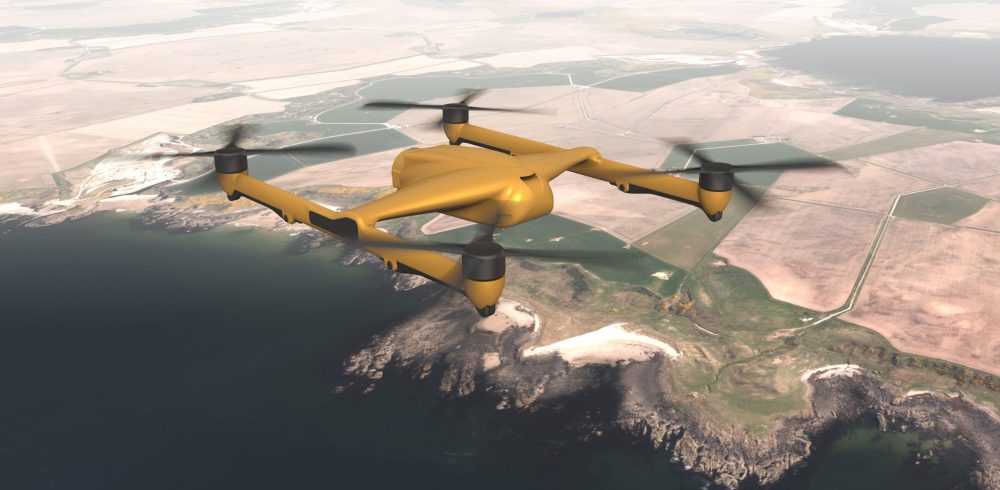BAE Systems and Malloy Aeronautics have announced plans to explore the development of an all-electric ‘heavy lift’ uncrewed air system (UAS) vehicle as a potential new solution to deliver cost-effective, sustainable rapid response capability to military, security and civilian customers.
The all-electric powered uncrewed concept vehicle will be designed with a top speed of 140 kilometres per hour and the ability to carry a class-leading 300kg payload with a range of 30 kilometres.
The cutting-edge technology could be used for a range of applications such as performing ship-to-ship and ship-to-shore movements to support military and security operations and logistics. Emitting zero carbon, the uncrewed system could help revolutionise military operations where there is a requirement to carry heavy loads, helping to keep military personnel out of harm’s way in dangerous situations or disaster zones, whilst reducing the environmental impact of our armed forces.
“It’s fantastic to be working with Malloy Aeronautics on this ground-breaking technology. Bringing together Malloy’s proven track record of innovative technology in this field, with our understanding of the military operating environment and extensive engineering and systems integration experience, will enable us to develop a sustainable and cost-effective solution for both military and commercial customers,” said Dave Holmes, Advanced Projects, Technology & Manufacturing Director for BAE Systems’ Air Sector.
The companies are exploring opportunities to collaborate on capability, design, manufacture and marketing of the concept vehicle.
“Beyond the military capabilities, there is also clear potential in the commercial, security and humanitarian arenas. Our goal is to work together with BAE Systems to ensure that our capabilities are not just the first and best for defence, but that they become the future workhorse to keep all our personnel safe,” added Oriol Badia, CEO Malloy Aeronautics.
The all-electric concept vehicle directly supports BAE Systems’ strategy to accelerate technology development through increased investment in research and development, as well as working with industry partners, SMEs and academia. The drive to develop sustainable products and solutions to meet evolving customer requirements is a key focus, including areas such as electrification, increased use of synthetics and other non-polluting energy sources.















